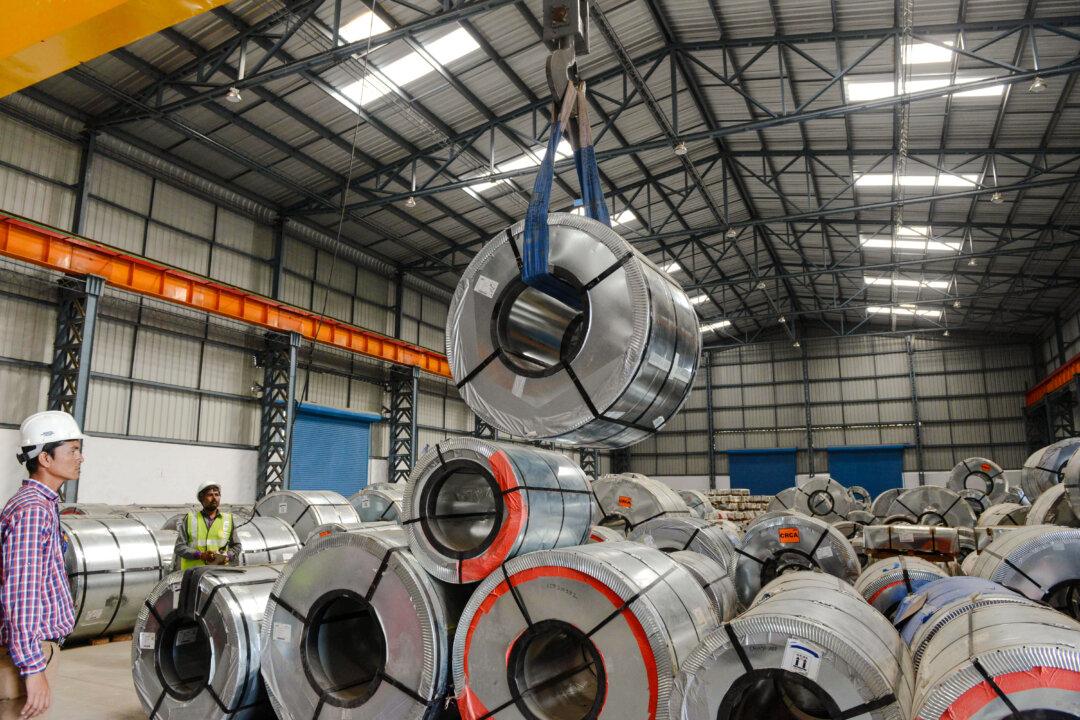India levied a new 12 percent tariff on some steel imports on April 21 amid a recent surge in cheap Chinese steel products.
The Indian Ministry of Finance announced that the tariffs would apply to five different categories of steel products. The notice stated that these import taxes would stand for the next 200 days, unless the Finance Ministry otherwise revokes or amends the order within that time frame.
These tariffs come as China has surged its production and export of cheap steel products in recent years.
India remains a distant second, producing 149 million metric tons of steel last year.
Japan, the third largest steel producer, produced 84 million metric tons of steel in 2024, while the fourth largest, the United States, produced 79.5 million metric tons, according to the World Steel Association data.
Indian Heavy Industries Minister H.D. Kumaraswamy cheered the new tariffs as a means of defending his country’s steel industry.
Countries around the world have been reevaluating their tariff schedules in recent months, as U.S. President Donald Trump has pushed for a rebalancing of trade relations between the United States and the rest of the world.
“Vice President Vance and Prime Minister Modi welcomed significant progress in the negotiations for a U.S.–India Bilateral Trade Agreement and formally announced the finalization of the Terms of Reference for the negotiations, laying down a roadmap for further discussions about our shared economic priorities,” Vance’s office said in a statement on Monday afternoon, as the vice president concluded a visit to Modi’s residence.
The vice president’s office said the emerging agreement presents a chance to enhance bilateral trade and create jobs “in a balanced and mutually beneficial manner.”







